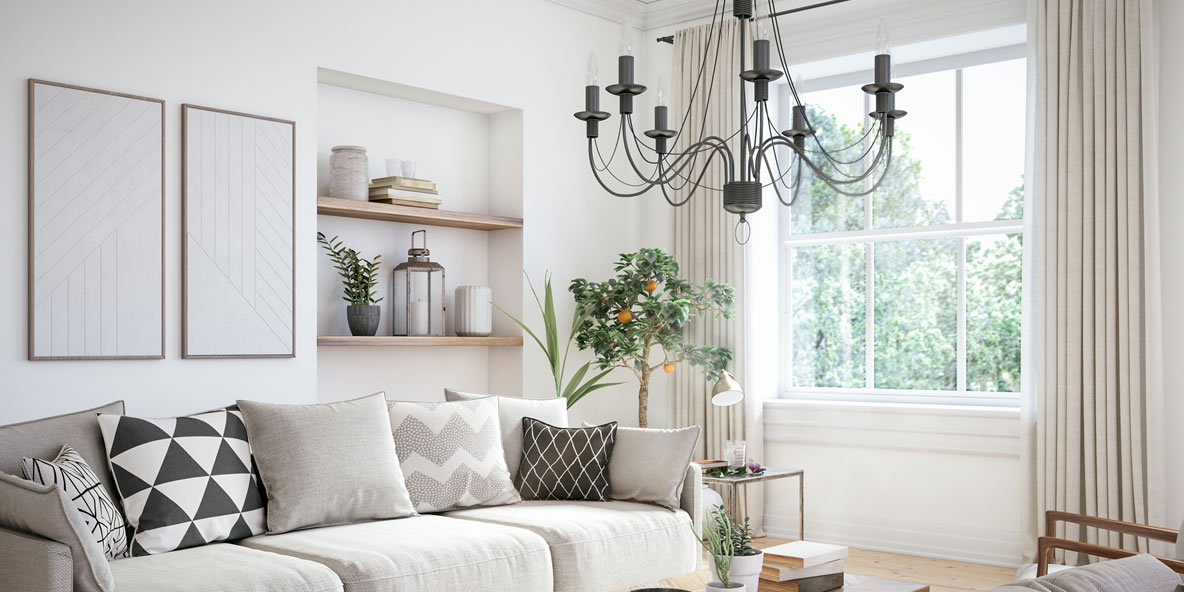Understanding the Difference between Blackout Curtains and Regular Curtains
June 19, 2023
When it comes to choosing curtains for your Atlanta, Georgia home, it’s essential to understand the differences between blackout curtains and regular curtains. While regular curtains offer basic privacy and decoration, blackout curtains go a step further by minimizing the amount of light that enters a room. In this article, we will explore the disparities between these two types of curtains, their effectiveness in blocking light, and their impact on temperature control.
- Blackout Curtains vs. Regular Curtains:
Blackout curtains are specifically designed to block out as much light as possible. They are typically made with thicker materials and have extra layers of lining to enhance light-blocking capabilities. In contrast, regular curtains are often thinner and have less lining material. Regular curtains provide varying degrees of light filtration, ranging from light filtering to fully sheer, allowing you to control the amount of light entering the room.
- Light Blocking Abilities:
The primary function of blackout curtains is to minimize the amount of light that penetrates a room. The thick and multi-layered construction of blackout curtains helps in blocking out external light sources, such as sunlight, streetlights, or car headlights. This light-blocking feature makes them an excellent choice for bedrooms, home theaters, or any space where light control is desired, such as nurseries or rooms where shift workers rest during the day.
On the other hand, regular curtains provide a moderate level of light filtration but do not have the same light-blocking capabilities as blackout curtains. They offer privacy and can reduce glare but are not designed to block out significant amounts of light.
- Heat Prevention:
While blackout curtains primarily focus on light control, they also offer some benefits in terms of temperature regulation. When it’s warm outside, blackout curtains can help prevent excess heat from entering a room, which can be especially useful in hot climates or during the summer months. However, it’s important to note that blackout curtains alone may not be sufficient to keep a room completely cool. Additional measures such as air conditioning, fans, or dehumidifiers are often needed to achieve optimal cooling.
In comparison, regular curtains, including sheer or lightweight options, do not have significant heat-blocking capabilities. They may provide minimal insulation but are not specifically designed to reduce heat transfer. If heat prevention is a priority, combining regular curtains with other methods such as blinds or window films can provide better insulation and heat control.
- Window Blinds and Heat Prevention:
Window blinds offer some heat prevention benefits, although they are not as effective as thick curtains or window films. Blinds can block a portion of the sun’s rays, reducing the amount of heat that enters the room. However, the gaps between the blind panels and the loosely woven fibers may still allow some heat to pass through, limiting their effectiveness in keeping the room cool.

- Finding the Right Solution:
When deciding between Atlanta blackout curtains, regular curtains, or a combination of both, it’s essential to consider your specific needs. If light control and privacy are your primary concerns, blackout curtains are an excellent choice. They can significantly reduce external light and create a darker environment, ideal for sleeping or movie-watching. If temperature regulation is also a priority, combining blackout curtains with other cooling methods is recommended for optimal results.
Regular curtains, while not as effective in blocking light or heat, can still offer privacy and decoration. They are suitable for areas where complete darkness is not required, such as living rooms or kitchens. Combining regular curtains with blinds or window films can improve heat prevention and provide additional light control when needed.
In summary, blackout curtains and regular curtains differ in their light-blocking abilities and heat prevention features. Blackout curtains are thicker, multi-layered, and designed to minimize the amount of light that enters a room, making them ideal for spaces that require darkness, such as bedrooms or home theaters. While they can also contribute to reducing heat transfer, additional cooling measures may be necessary. Regular curtains offer moderate light filtration and minimal heat prevention, suitable for areas where complete darkness is not essential. By understanding the distinctions between blackout curtains and regular curtains, you can make an informed decision based on your specific needs for light control, privacy, and temperature regulation in your living space. Remember to consider other methods such as window blinds or films to enhance heat prevention if necessary.